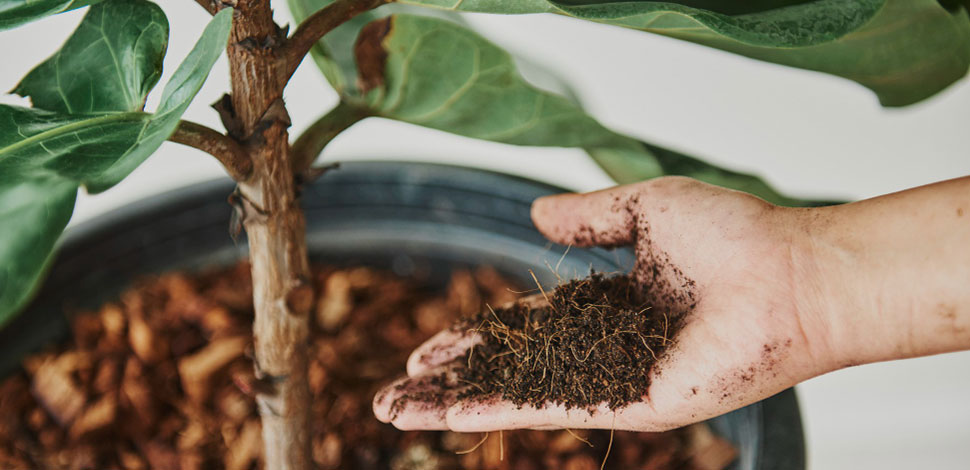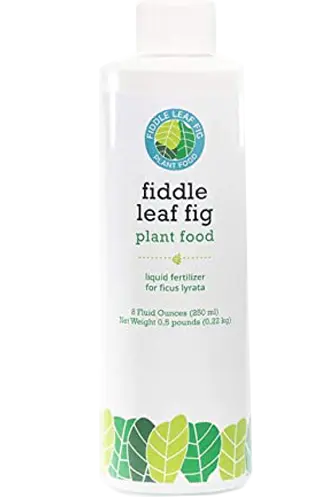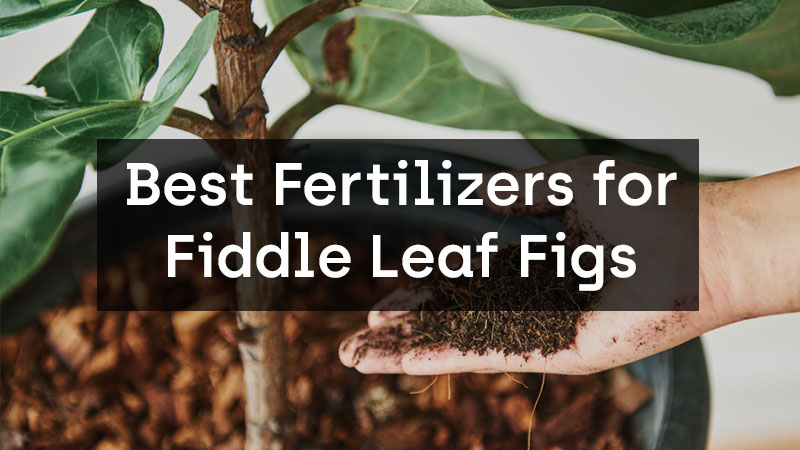Fiddle leaf figs (Ficus lyrata) are popular houseplants known for their large, glossy leaves and striking appearance. To keep these tropical plants thriving, it’s important to provide them with the right nutrients, and fertilizers play a crucial role in this regard. In this article, we will explore the best fertilizers for fiddle leaf figs, understanding their needs, and providing guidance on proper fertilization techniques.
Table of Contents
- Introduction
- Understanding the needs of fiddle leaf figs
- Types of fertilizers for fiddle leaf figs
- Essential nutrients for fiddle leaf figs
- Factors to consider when choosing a fertilizer
- Best fertilizers for fiddle leaf figs
- How to fertilize fiddle leaf figs
- Common mistakes to avoid when fertilizing fiddle leaf figs
- Troubleshooting fertilizer-related issues
- Conclusion
- FAQs
Introduction
Fiddle leaf figs require specific care to maintain their lush foliage and overall health. While factors such as light and water are essential, the nutrients provided by fertilizers are equally important. By choosing the right fertilizer and following proper fertilization practices, you can ensure your fiddle leaf figs grow vibrantly and flourish.
Understanding the needs of fiddle leaf figs
Fiddle leaf figs are native to the tropical rainforests of West Africa, where they thrive in bright, filtered light. To mimic their natural habitat, it’s crucial to place them in well-lit areas away from direct sunlight. Additionally, fiddle leaf figs require consistent moisture, but they don’t appreciate soggy or waterlogged conditions. Finally, providing the right nutrients through fertilization helps support their growth and vitality.
Types of fertilizers for fiddle leaf figs
When it comes to fertilizers for fiddle leaf figs, you have two main options: organic and synthetic. Organic fertilizers are derived from natural sources, such as compost, manure, or plant-based materials. They release nutrients slowly and contribute to overall soil health. Synthetic fertilizers, on the other hand, are manufactured chemically and provide nutrients in a readily available form.
Organic fertilizers are often preferred for fiddle leaf figs due to their gentle and sustainable nature. They provide a range of micronutrients and promote beneficial microbial activity in the soil. Popular organic options for fiddle leaf figs include fish emulsion, seaweed extract, and worm castings.
Synthetic fertilizers offer the advantage of precise nutrient control and immediate availability. However, they can be more potent and require careful application to avoid over-fertilization. Synthetic fertilizers suitable for fiddle leaf figs often have a NPK ratio 3-1-2.
Essential nutrients for fiddle leaf figs
Fiddle leaf figs have specific nutrient requirements to support their growth and prevent deficiencies. The three primary macronutrients are nitrogen (N), phosphorus (P), and potassium (K), commonly referred to as NPK. Nitrogen promotes leaf growth, phosphorus supports root development, and potassium aids in overall plant health and disease resistance.
In addition to the macronutrients, fiddle leaf figs also require micronutrients like iron, manganese, and zinc. These trace elements are essential for various physiological processes and are often present in well-balanced fertilizers.

Factors to consider when choosing a fertilizer
Several factors come into play when selecting a fertilizer for your fiddle leaf figs:
- pH levels and acidity: Fiddle leaf figs prefer slightly acidic soil with a pH range of 6 to 7. Choose a fertilizer that doesn’t significantly alter the pH and maintains a suitable acidity level for optimal nutrient uptake.
- NPK ratio: Look for a fertilizer with a balanced NPK ratio to meet the specific nutritional requirements of fiddle leaf figs. A balanced ratio ensures the plant receives adequate amounts of each macronutrient.
- Slow-release vs. liquid fertilizers: Slow-release fertilizers provide a steady supply of nutrients over an extended period. Liquid fertilizers, on the other hand, offer quick absorption but may require more frequent applications. Consider your preferences and the needs of your fiddle leaf figs when selecting between these options.
- Water-soluble vs. granular fertilizers: Water-soluble fertilizers dissolve easily in water and are suitable for regular use during watering. Granular fertilizers release nutrients slowly and are ideal for long-term feeding. Choose the formulation that aligns with your fertilization routine and the needs of your plants.
Best fertilizers for fiddle leaf figs
Here are some recommended fertilizers for fiddle leaf figs:
- Organic Options:
- Fish emulsion: Rich in nitrogen and other essential nutrients, fish emulsion is a gentle organic fertilizer suitable for fiddle leaf figs. It promotes healthy foliage growth and overall plant vigor.
- Seaweed extract: Derived from seaweed, this organic fertilizer provides a wide range of micronutrients that support strong root development and enhance plant resilience.
- Worm castings: Worm castings are nutrient-rich organic matter produced by earthworms. They improve soil structure, increase microbial activity, and provide slow-release nutrients.
- Synthetic Options:
- General-purpose balanced fertilizer: Look for a balanced NPK fertilizer, such as 3-1-2 or 9-3-6, specifically formulated for indoor plants. These fertilizers provide a well-rounded nutrient profile for fiddle leaf figs.
- Time-release granular fertilizer: These slow-release fertilizers release nutrients gradually over time, ensuring a steady supply of essential elements for your fiddle leaf figs.

Fiddle Leaf Fig Tree Plant Food
Calcium Fortified, Urea-Free and with NPK Ratio of 3-1-2 for Healthy Roots, Stems and Leaves (8 Ounces))
How to fertilize fiddle leaf figs
When fertilizing your fiddle leaf figs, follow these guidelines:
- Choose the right time: Fertilize your fiddle leaf figs during the active growing season, typically spring and summer. Avoid fertilizing during the dormant period.
- Dilute liquid fertilizers: If using liquid fertilizers, dilute them to half or quarter strength to prevent over-fertilization. Follow the manufacturer’s instructions for proper dilution ratios.
- Apply evenly: Distribute the fertilizer evenly across the soil surface, avoiding direct contact with the leaves or stem.
- Water thoroughly: After fertilizing, water your fiddle leaf figs thoroughly to help the nutrients penetrate the root zone.
- Monitor and adjust: Observe the response of your plants to fertilization. Adjust the frequency and dosage accordingly, keeping in mind the specific needs of your fiddle leaf figs.
Common mistakes to avoid when fertilizing fiddle leaf figs
To ensure successful fertilization, avoid the following mistakes:
- Over-fertilization: Applying too much fertilizer can lead to nutrient burn and damage to the plant. Follow the recommended dosage and frequency guidelines to prevent over-fertilization.
- Using the wrong type of fertilizer: Choose a fertilizer specifically formulated for indoor plants or specifically for fiddle leaf figs. Using the wrong type or formulation can result in nutrient imbalances or deficiencies.
- Neglecting other plant care aspects: Fertilization is just one aspect of plant care. Ensure your fiddle leaf figs receive adequate light, water, and proper drainage, as these factors significantly contribute to their overall health.
Troubleshooting fertilizer-related issues
In some cases, issues may arise despite your best fertilization efforts. Here are common problems related to fertilizers and how to address them:
- Nutrient deficiencies: If you notice yellowing leaves, stunted growth, or poor overall health, your fiddle leaf fig may be experiencing nutrient deficiencies. Adjust the fertilizer dosage or consider using a specialized fertilizer to address the specific deficiency.
- Nutrient excesses: Over-fertilization can lead to nutrient excesses, causing leaf burn, browning, or distorted growth. Flush the soil with water to remove excess salts and adjust your fertilization practices accordingly.
- Leaf burn or damage: If your fiddle leaf fig’s leaves exhibit signs of burn or damage, it may be due to direct contact with concentrated fertilizer. Rinse the affected leaves with water and adjust your fertilization technique to prevent further damage.
Conclusion
Choosing the right fertilizer for your fiddle leaf figs is essential for their overall health and vibrancy. Organic options like fish emulsion, seaweed extract, and worm castings provide gentle and sustainable nourishment. Synthetic fertilizers with a balanced NPK ratio offer precise nutrient control. Remember to consider factors like pH levels, release type, and formulation when selecting a fertilizer. By understanding your fiddle leaf figs’ needs, following proper fertilization techniques, and avoiding common mistakes, you can ensure they thrive and bring beauty to your indoor space.
FAQs
1. Can I use regular garden soil as a fertilizer for my fiddle leaf fig?
No, regular garden soil is not suitable as a fertilizer for fiddle leaf figs. It lacks the necessary nutrients and may lead to poor drainage. Opt for well-draining potting mix formulated specifically for indoor plants.
2. How often should I fertilize my fiddle leaf fig?
Fiddle leaf figs generally benefit from monthly fertilization during the active growing season (spring and summer). However, always observe your plant’s response and adjust the frequency based on its specific needs.
3. Can I use coffee grounds as a fertilizer for my fiddle leaf fig?
Coffee grounds can be used as a supplemental amendment to improve soil structure, but they shouldn’t be used as the sole source of nutrients for fiddle leaf figs. Combine coffee grounds with other organic fertilizers or compost for a well-rounded approach.
4. Is it necessary to fertilize my fiddle leaf fig during winter when it's dormant?
No, it’s not necessary to fertilize your fiddle leaf fig during its dormant period. Fertilization should be reserved for the active growing season to avoid stimulating new growth when the plant is naturally resting.
5. What should I do if I accidentally over-fertilized my fiddle leaf fig?
If you accidentally over-fertilized your fiddle leaf fig, flush the soil with water to remove excess salts. Adjust your fertilization practices and closely monitor the plant’s response. If severe damage occurs, consider repotting the plant in fresh, well-draining soil.







0 Comments